Florence and Taylor Reinterpreting "Florida!!!" as a Sapphic Anthem
here’s a diversity of interpretations surrounding the performance, with over 1,000 tweets suggesting a sapphic element. @dwohtlorr even commented that this was “genuinely the gayest thing she’s ever done.

Final Night Surprise at Wembley
Audio Version of this article here:
To celebrate the final night of her Eras Tour European leg at London’s Wembley Stadium, Taylor Swift welcomed a special guest onstage. For the Tortured Poets Department hit “Florida!!!,” Swift surprised fans by bringing out Florence Welch of Florence + The Machine. The duo performed in coordinating white, flowing dresses, singing together about burying regrets in Florida. This collaboration captivated the audience and marked a memorable close to the European leg of the tour. The performance hinted at deeper layers of meaning, making it a pivotal moment in the tour.
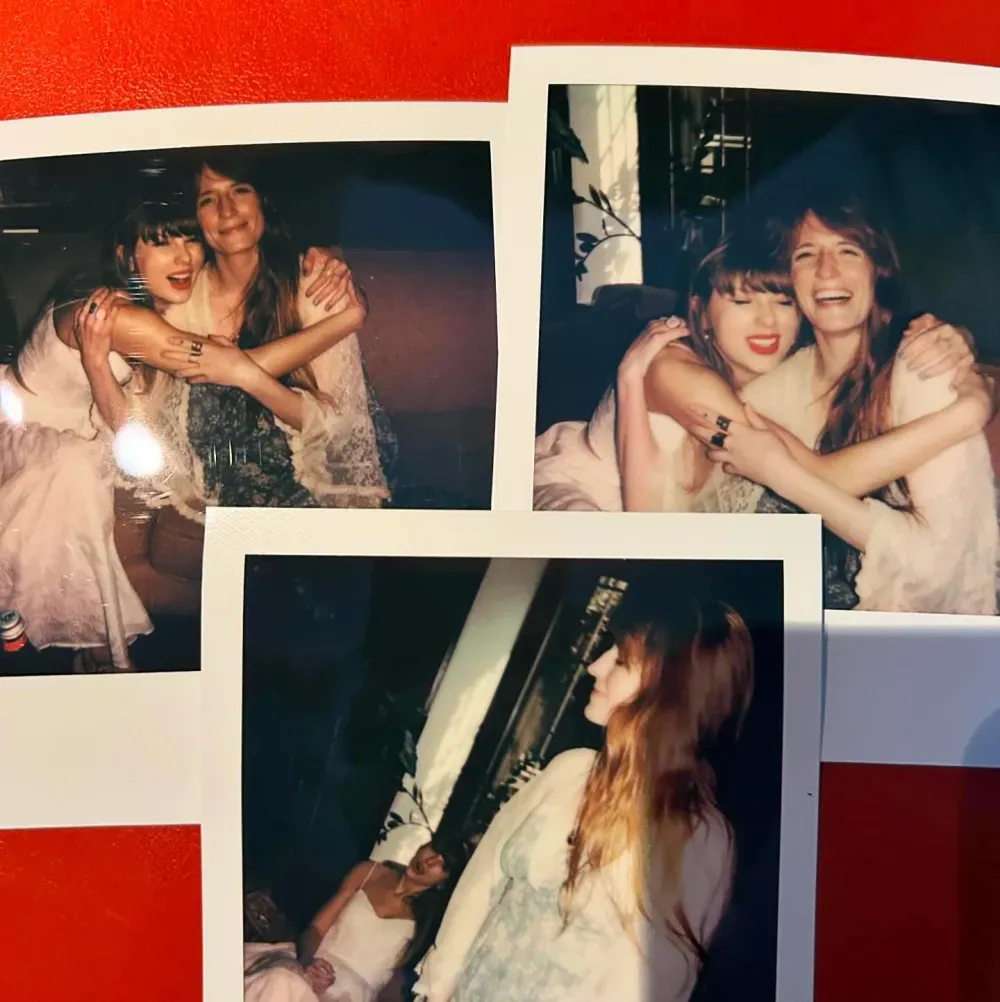
Sapphic Interpretations and Reactions
There’s been a wide range of interpretations surrounding the performance, with over 1,000 tweets suggesting a sapphic element. @dwohtlorr even commented that this was “genuinely the gayest thing she’s ever done.” This interpretation has been widely embraced by fans, sparking significant online discussion and analysis, and adding a new dimension to the song's reception.
Queer-Coded Elements in "Florida!!!"
The line “All of the bodies that have ever been on my body” was highlighted during the performance when two female dancers were involved, with Taylor and Florence's hands on them, adding to the intimate atmosphere. Olivia, Miley, and Billie have all indirectly teased Taylor, alluding to her massive shows and their ability to come out openly, while “Taylor only comes out at night.” Taylor and Florence even incorporated elements of Miley’s most famously lesbian performance into their choreography. Echoes of Madonna and Britney's 2003 VMA performance were also present, though Florence declined to participate, while Taylor was on her knees, seemingly begging for it.
"Out" Week
Taylor was likely behind the planning because withing three days Sabrina releases the taste video with the below scene. and the funeral one which is even more extra. Taylor got to go first, nearly simultaneous with olivia and roan, who did idendical poses. It was bring. your redheaded lover to work day it seems. QUite a week for the gay girlypops and yet they are facing so much persecution from cancel culture swifties.

Florence Welch's Involvement and Symbolism
Florence Welch’s involvement in the performance added another layer of symbolism. Known for being photographed deep-kissing many women, Florence wore outfits reminiscent of Taylor’s Karlie Kloss era. The ivy-covered backdrops nodded to other sapphic themes in Taylor's music. The theme of haunting was strong, evoking a ghostly, RWYLM Kar vibe.
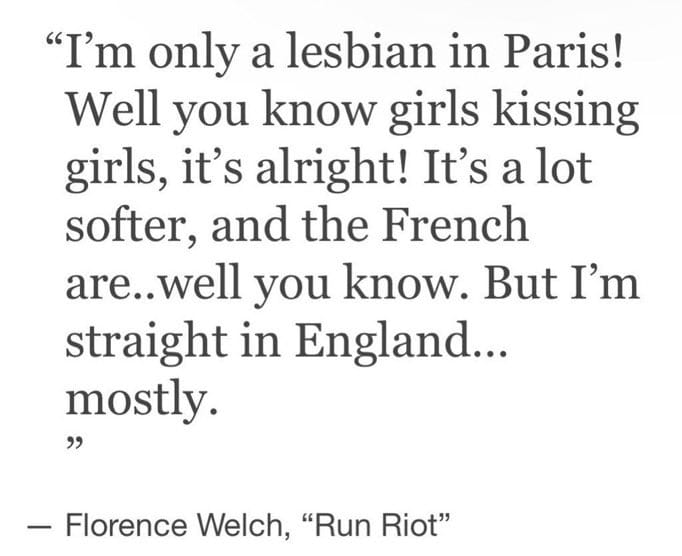
If only Taylor had a song about Paris..
Intimate Moments Between Taylor and Florence
During the performance, Florence fully stroked Taylor’s cheek and mouth, evoking the line, “and your cheating husband disappeared, well, no one asks any questions here.” Taylor, often referred to as “King” by her friends, gave off clear “Deadass thought I made it obvious” vibes throughout this performance.
It’s no coincidence that Sabrina Carpenter said, “I’m out now” on the 5th anniversary of Lover, the album that began with “Me! Out now!”
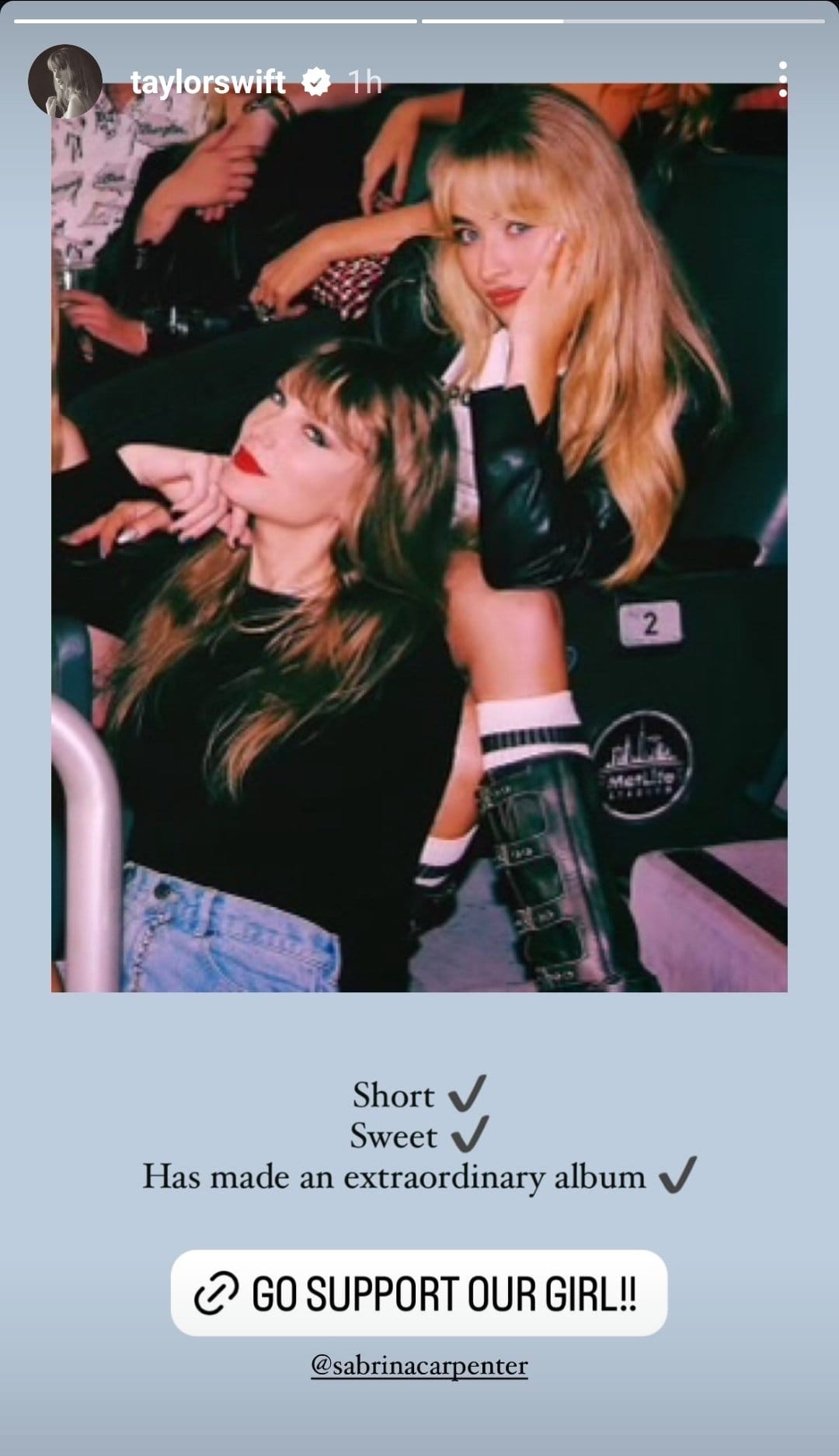
Gay Erasure and Its Impact
Gay erasure is a form of hate. Now that "don't show this pic to the Gaylors" is trending, it reveals the extent of gaylighting in the community. Erasure often becomes a form of taunting; those who deny it know the truth—they just hate it. Sabrina Carpenter, for instance, talks about her gay awakening in "Short and Sweet," creates a music video where she kisses a woman, and has publicly discussed being queer. Yet, people still insist on labeling her as straight. This denial of her identity is a deliberate form of erasure, a tactic used not only against women and people of color but never against a man’s white maleness. I'm not against not labelling, but I do think there's often malice behind the label of straight when someone keeps trumpeting their non-straightness or bisexuality.
Kamala Harris facing scrutiny over her identity as a Black woman. Erasure as trolling. Now, Judith Butler writes that not everyone’s identity is for public consumption, and this idea resonates here only where effort was made to hairpin and not disclose artfully. The coordinated efforts in the media are clear—Taylor Swift led the charge, almost simultaneously with Olivia Rodrigo and Chappell Roan, who posed identically. It was like “bring your redheaded lover to work day,” a significant week for the queer community, yet they face intense persecution from gaslighting Swifties. This are the children of the 90s kids who supported the military slogan; "don't ask, don't tell."
Subtle Flagging and Signaling
Sabrina’s song "Short and Sweet" was promoted with her tweet,, “Short n’ Sweet out now, I’m out now,” while Taylor’s "Me!" announces “Me! Out now,” released on Lesbian Visibility Day. Lover was like the era of flagging. Both of them are subtly flagging or signaling their queerness, but just as people ignored Taylor’s signals, they’re trying to do the same to Sabrina. This is a clear example of how society struggles to accept subtlety in queer identity, often demanding explicit declarations instead.
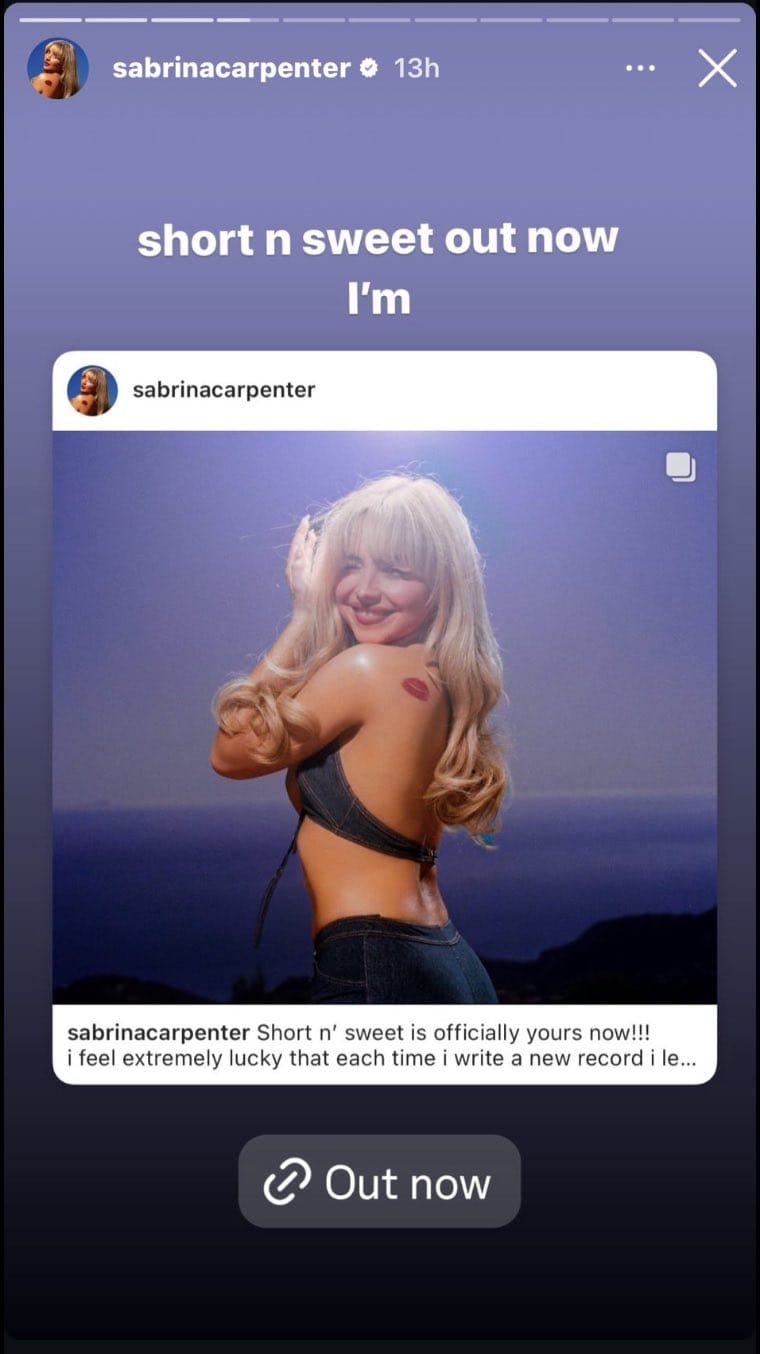
The Double Standard of Queer Identity
The absurdity becomes even more apparent when you consider this: if someone interviewed Taylor, Sabrina, Hayley, or any other artist and asked, “Hey, regardless of your orientation, would you be offended if people thought you might be queer?” they’d likely respond with, “Of COURSE not. What kind of question is that?! It’s 2024!” Yet, how many times does a woman have to come out for her queerness to be recognized as valid? These women aren’t queerbaiting because they are queer.
It’s disheartening to see that a woman can make the decision to kiss another woman in a music video, and “fans” will still insist she’s straight and doesn’t want people speculating otherwise. I once joked that a woman could tattoo the word “gay” on her face, and people would still say she’s straight because she didn’t explicitly say, “I’m gay.” Then, Billie Eilish used a filter that put the word “gay” on her face, and people still insisted she was straight.
The Significance of Sabrina Carpenter’s “I’m Out Now”
It’s no coincidence that Sabrina Carpenter said, “I’m out now” in her post promoting the album today, on the 5th anniversary of Lover, the album that began with “Me! Out now!” If you kiss a girl in a music video, you can’t be upset when people speculate. Everyone’s talking about the kiss between Jenna Ortega and Sabrina in Sabrina's "Taste" video, and rightfully so. But the funeral scene is just as fruity, if not more. If this is queerbaiting, then I love it—actually, do it more! Throw the bait, and I’ll gladly take it. All I want is to see Sabrina and Jenna kiss girls and be queer.
The Harm in Defending Heterosexuality Online
If you feel the need to defend someone’s heterosexuality online, it’s because you’re homophobic. Full stop. End of discussion. Otherwise, you wouldn’t care if someone called your favorite artist gay. Straight people are so adamant that it’s bad to recognize someone’s queerness until they make an explicit announcement. But when Sabrina Carpenter says, “I’m out now” and makes out with Jenna Ortega, they still refuse to acknowledge it. That’s just homophobia, babes.
Backstage Video and Performance Dynamics
That same night, Taylor released a gay-coded backstage, straight-on-stage video of “ICDIWABH,” while removing Travis’s song "So High School," which had been a diss disguised as a tribute in the first place. Somehow for Swifties, Travis carrying Taylor to force her to perform is seen as the most romantic thing in the world, while Taylor and Florence skipping, holding hands, and caressing each other is viewed as icky and wrong. Does Travis even realize that Taylor’s “being straight with him” while singing about him is just a performance, much like her moves in the Chiefs’ box, which echo high school choreography?
Reinterpreting "Florida!!!" as a Sapphic Anthem
Before this performance, many hadn’t considered “Florida!!!” as a particularly gay song. Now, the performance suggests a narrative of wanting to escape a boring life for a female lover in Florida. The potential for a “Florida!!!” video that continues this narrative is intriguing, and the song’s placement in the setlist now feels even more deliberate. Gay erasure is a form of hate, and as "don't show this pic to the Gaylers" trends, it reveals a pattern of gaylighting. Often, erasure is a form of taunting—those who do it know the truth but hate it.
Themes of Performance and Authenticity
Taylor's struggle with discussing her "Alphabet Mafia Membership" due to concerns about the kids speaks volumes. "Spelling is Fun, indeed." In songs like "Mirrorball" from her folklore album, Swift channels the duality of Fight Club’s protagonist, reflecting on the conflicting personas she projects to the world and the clubs she can't discuss. The lyrics “I’m still on that trapeze, I’m still trying everything to keep you looking at me” highlight the tension between the performative self and the authentic self. This theme resonates with societal expectations versus personal freedom.
Taylor’s Narrative Inspiration for "Florida!!!"
Swift explained the inspiration behind “Florida!!!” in an interview, noting it was about the choices that catch up to you. The song also draws from crime stories where people escape to Florida. This narrative ties into the themes of regret and reinvention. The lyrics reference past works like “no body, no crime,”
Connections to Other Artists and Performances
On the same day Taylor brought out Florence, Olivia Rodrigo brought out Chappell Roan, suggesting some insider knowledge. This connection hints at a larger narrative being crafted. The performances and the release of videos like “Getaway Car” contribute to the ongoing speculation. Fans are left to ponder what’s next. Taydaughter Sabrina kissed Jenna in the video released 2 days later.
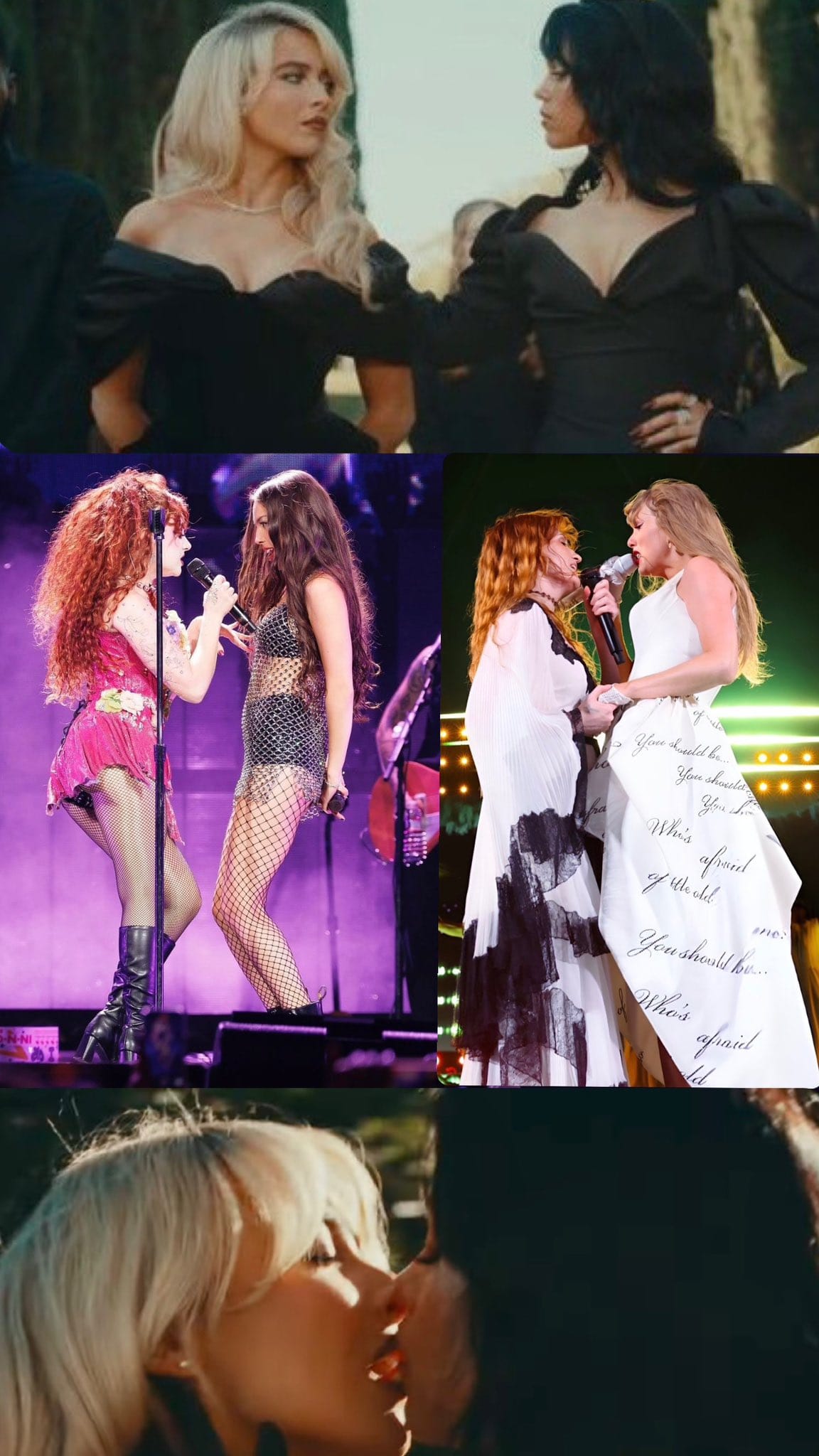
Speculation About Future Releases
With two highly anticipated re-releases potentially dropping soon, fans are on edge. Speculation is rife that Taylor might break up with Travis, “ruining” her reputation before releasing Reputation with gay vault tracks. The idea of burying regrets by coming out in Florida adds a dramatic twist.
Florida’s Role in Taylor’s Narrative
Florida’s significance in Taylor Swift’s narrative is linked to the idea of burying the "gay Taylor" she had to suppress, symbolized by dressing in black. This concept is compared to Buffy the Vampire Slayer Season 6, where Buffy is brought back as a zombie by iconic openly gay couple Tara and Willow’s spells. Just like Dusty those two broke the gay glass ceiling in the queer arts. Yet just like Buffy and Faith, Taylor’s "gay lover era" is revived but hidden. The idea of Taylor killing off 13 straight versions of herself and then the "real one"—the gay one—adds a complex layer to her storytelling. Willow the gay witch inspired willow the song but the magic is manipulation she is doing magic to her fans by doing this so late in the era. Magic was often symbolic for weed and lesbian sex on Buffy, so we see the appeal here for Taylor and so were Tara's tiny braids of that era.
Online Discourse and Sapphic Themes
Much of the current online discourse centers on the idea that Taylor Swift’s performance with Florence Welch was akin to a coming-out party. The significance of the date 8-21 as a Rep Release was heavily hinted at by Taylor through various codes. The performance, particularly with the song “Florida!!!,” ties into themes from Thelma & Louise and Taylor begging for a kiss from someone who is know to kiss girls. These references, along with her connections to Hurricane Florence and Truman show's shooting location of Destin, Florida, add to the layered storytelling.

Taylor’s Songwriting as a Brainstorming Board
Taylor Swift’s songwriting often feels like a brainstorming board where everything is interconnected. Whether by design or coincidence, Taylor ties in multiple cultural references, from Thelma & Louise to Dead Poets Society (same director as Truman Show, Used its actors in FN video)
The Florida shows were particularly significant, marking the end of her PR relationship with Joe, which many argue was never real. The Eras Tour, therefore, becomes a return to reclaiming her work, much like the resurgence of past personas.

Unpacking "Look What You Made Me Do"
In the "Look What You Made Me Do" video, Taylor kills off the 13 younger versions of herself, symbolizing the end of past personas. The Me! video, which followed, was intended as her first lesbian coming-out party, but was thwarted when Karlie Kloss went to Scooter Braun. She then killed off the real ME! with the vogue interview and edits to her documentary. The ouroboros, or infinity symbol, introduced in these visuals, represents constant reinvention. This concept is central to her identity and her ongoing narrative of self-reclamation. With the video for Look What You Made Me Do, she kills off all 13 versions of herself. Not literally, but they’re personas—not real people. She kills off these personas, burying them in Florida, I guess, along with all her past iterations. Much like how Madonna or David Bowie had different eras, Taylor killed off her previous selves. But she had to bring them all back, and that’s what the Eras Tour is—a return, to the tune of a billion dollars.
"Me!" Video and Queer Representation
The Me! video was supposed to be a celebration of Taylor’s true identity, marked by rainbows, unicorns, and gay pride. However, it was overshadowed by external events, forcing her to revert to her previous personas. The black color associated with Reputation symbolizes this suppression. Yet, in Me!, Taylor subtly reclaims her identity, promising the real her after losing the past 13 versions. This struggle with identity is poignantly captured in the lyrics of "Anti-Hero."
The Psychological Depth of "Anti-Hero"
But we saw that Lover was really rooted in all of that. In the Me! video, she essentially said, “Alright, yeah, you lost the past 13 versions of me, but now you’re getting the actual real me.” She’s quoted as saying, “rainbows and unicorns and gay pride.” That’s what Anti-Hero is about, a song that no one really publishes or analyzes deeply. It’s not just about narcissism or her own reflection; the key line is “communal narcissism disguised as altruism,” like some congressmen.
Congressmen are communal, not covert, yet they always accuse her of being covert. So why did she say covert instead of communal when talking about congressmen? It wasn’t just because it rhymed; it’s because having your identity be about gay pride when you’re not gay is, in effect, a form of communal narcissism. It’s because you don’t have a sense of identity, so you fake one. It’s the most therapy-informed, brilliant lyric, especially considering everything that happened after her masters were stolen.
"Anti-Hero" delves into the complexities of identity. Taylor’s lyrics reflect her internal conflict and the external pressures of being accused of covert behavior. This song, often overlooked in deeper analysis, reveals the psychological depth behind Taylor’s experiences post-masters theft. The brilliance of the lyricism in "Anti-Hero" lies in its critique of identity and the societal expectations placed upon her.
Reclaiming Her Masters and Identity
After the rights to her masters were stolen, Taylor Swift was forced to revisit her 13 past personas, remaining closeted to regain ownership. Achieving serious sales for each re-recorded album became essential, and she believed she couldn't do this as an openly queer person. The “Hey kids, spelling is fun!” line alludes to this, referencing the alphabet mafia.
It gets more intense because in the Look What You Made Me Do video, she kills off the 13 younger Taylor Swift personas. Then, in the Me! video, she says, “Sorry, I got crazy on the phone,” referencing the part where she picks up the phone and says, “Oh, hey, you’re calling for Taylor? Oh, she’s not here. She’s dead.” But she’s talking about all the other personas. The new persona? ME! never got her coming out party instead she mourned it and yet here with Florance, she let it out a little.
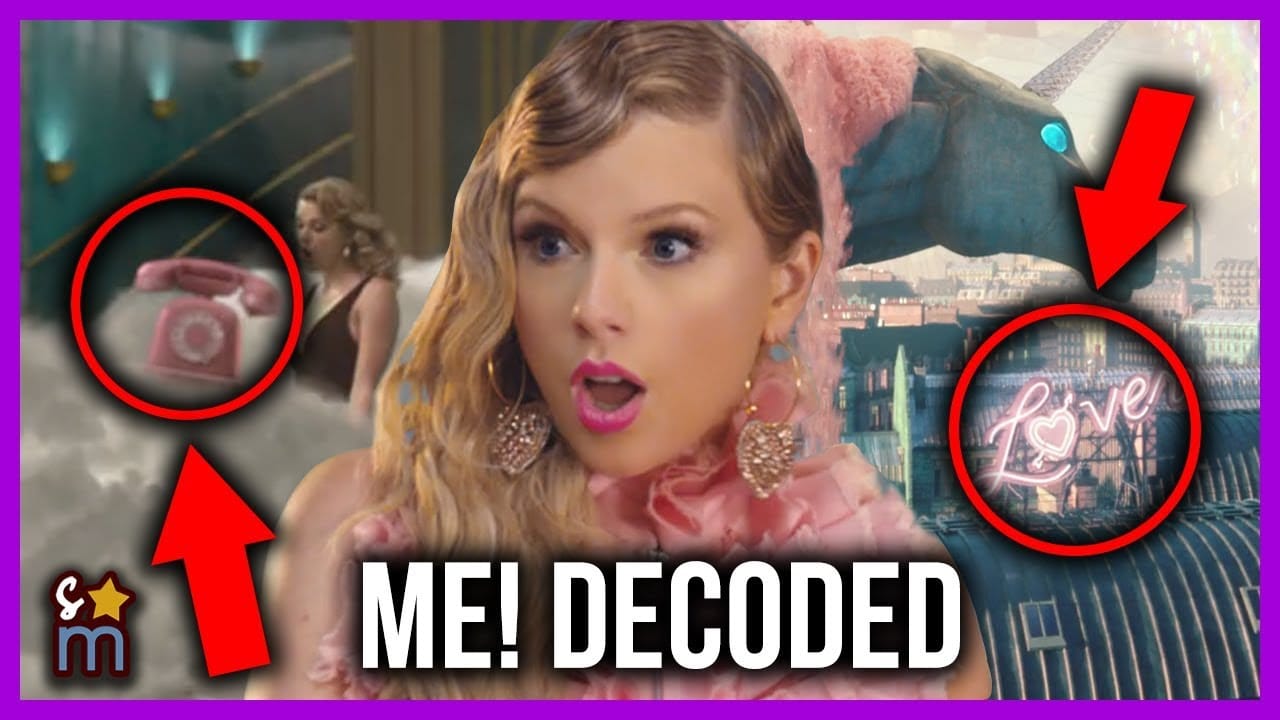
The Burden of Reclaiming Past Selves
The Eras Tour represents Taylor’s need to bring back all 13 past versions of herself. So after the rights to her masters were stolen, she was forced to become those 13 Taylors again, as a closeted person, in order to regain ownership. However, this meant she had to achieve serious sales for each re-recorded album. The math suggested that she couldn’t do this as an openly queer person (that’s what the “Hey kids, spelling is fun!” line was referencing). She’s saying, “I’m not the ‘Kill Taylor’ girl; I’m the rainbow unicorn Mary Poppins, the alphabet person, your strange aunt in the cottage in the forest—but more on that later.” Taylor cleverly hides her true self in plain sight, using clues for her audience to uncover.
Judith Butler's Theory and Taylor's Situation
Judith Butler writes about how homosexuality shouldn’t be something forced out of someone, like in McCarthyism or Marxism, where people were outed and persecuted. Taylor’s situation reflects this idea. Coming out is something done in trusted spaces, because if you come out to the wrong people—especially when covert narcissists are everywhere—they’ll weaponize it, profit off of it, and label you. They would have called Taylor’s version the “gay version,” saying she “turned” just like she “turned” from country music to pop, or from a Southern accent to a more neutral one. They might even have said she “turned” from being a “real” person to a Hollywood or political figure, even though her true self was always there from the beginning. But I digress. The pressure to maintain her true identity while navigating public perception is immense.
Dusty Springfield's Influence on Taylor
Taylor Swift frequently references Dusty Springfield, who had an album called Reputation with a similar black-themed aesthetic. Dusty Springfield had an album called Reputation that was also black-themed in a similar way. There are probably about 50 good Dusty Springfield references in Taylor’s work, her lyrics, videos, and photoshoots. Dusty Springfield was a lesbian who tried to come out in the ’70s, and it damaged her career. So why is Taylor playing Dusty’s music before shows and coding all these references? What she’s saying is that coming out would be commercial suicide for her, too. By playing Dusty’s music before shows, Taylor acknowledges the risks involved in revealing her true self.
Industry Forces and Taylor's Closet
Just as Taylor was about to come out, industry forces conspired to leverage her catalog against her, pushing her back into the closet (seven). This situation feels scripted, yet it’s a narrative rarely discussed in depth. The drama of Taylor’s forced re-closeting and the complexities surrounding her identity remain underexplored. The situation highlights the challenges she faces in balancing her personal truth with public and commercial pressures.
Intensifying the Situation
Sshe delivered a significant blow with the song “But Daddy, I Love Him,” where she essentially called out fans who try to dictate who she should date and love. There’s a lot of tension between Swifties and Gaylers—Swifties often dismiss the Gaylers as delusional and are frustrated that others buy into what they see as a false narrative. For many Swifties, Taylor isn’t just a person; she’s an identity they’ve crafted, one that’s straight, and they’ve found their own identity through her.
Contrast Between Brand and Person
This creates a stark contrast between Taylor the brand and Taylor the person, particularly in how the Gaylers are persecuted. But the truth is, the music seems more aligned with the Gaylers than the Swifties. Taylor writes the songs, and there’s money to be made, so she plays the capitalist game, being the daughter of a banker, after all. She has to do what she has to do, not just for the money but to ensure the catalog is her own.
Subtle Hints and Sapphic Themes
That’s why she removed “So High School,” which was about her PR relationship with Travis, so she could write about her sapphic side, about Thelma & Louise, and maybe even come out. Coming out would be like driving her car off a cliff Thelma and Louise style —essentially ending her career. But there’s an almost threatening tone at the end of her European tour, where she seems to say, “What if I do? What if I come out and kiss this girl?” She nearly did several times before running off and prancing down the stage. The tension between her public persona and private self is palpable, especially with the dance moves in “So High School,” which mimicked her high school football games and were choreographed so well they seemed real.
“Florida!!!” and Dusty Springfield Homage
The fitting first sapphic performance of “Florida!!!” with Florence Welch came at a moment when everyone expected the clues to point to Reputation as Taylor’s version, which many see as a straight narrative. But they’re missing that Reputation is also a Dusty Springfield homage—literally Dusty not caring about ruining her career and reputation by coming out, even though it did hurt her. That’s why “Look What You Made Me Do” and Reputation are central here. The metaphors about Florida are brilliant, and the depth of her mind is truly amazing.
Anticipation for “Cassandra”
The only song from the 30-song album she hasn’t performed yet is “Cassandra,” which coincidentally, Florence also has a song named after. It’s something she’ll likely play during her U.S. tour after this break. The way she teased Reputation and withheld it from us—someone even called her a tease right before she dove into the stage for “Anti Hero.” She smiled that wicked little smile because she knew exactly what she was doing. Despite her denials, it was clear she was covertly telling us to pay attention that night.
Mastery of Easter Eggs and Allusions
This is my personal brand and why I'm here—Easter eggs and mysteries—and she’s mastered it. It’s similar to what Twin Peaks did, taking little clues, foreshadowing, noir elements, Hitchcockian touches, and bringing them into the mainstream. We had X-Files, Lost, and other shows like Haunting of Hill House, with their subtle foreshadowing, classic literature references, and so on. For Taylor to take those elements and weave them into her songs is genius. Many of us Swifties and Gaylers were into Rap Genius before there was Genius.com.
Rappers caught onto this idea early, riddling every line with allusions. Think of The Wasteland, inspired by T.S. Eliot, who packed his poems full of literary allusions. Allusions are a smart way of writing, and that’s what people look for in pop music nowadays. But Taylor’s are so mysterious that the Genius page often misses the depth because she’s got layers—lyrics for the Gaylers, lyrics for the Swifties, lyrics for the Travis fans. She’s even admitted to trolling us, making songs about five people at once, and that’s her style.
Florida as a Place of Reinvention
According to People, Swift explained to iHeartRadio that Florida is known as a place where people go to try and “reinvent themselves” after committing a crime. It’s where they escape to. Additionally, people go to Florida when they retire, for vacations, or whenever they need a break.
Tampa's Symbolic Role in the Eras Tour
This location is particularly symbolic for Swift, as Tampa, Florida was the first show she performed during her “Eras Tour” after her split from longtime boyfriend Joe Alwyn was publicly announced. She explained, “I think when you go through a heartbreak, there’s a part of you that thinks: I want a new name, I want a new life, I don’t want anyone to know where I’ve been or know me at all.”
Florida as an Escape Drug
Sticking with the theme of escape, Swift compares Florida to a drug that offers a way to get away from reality. While drugs aren’t typically used to reinvent oneself, in the general sense of ‘getting away,’ Florida is like a drug that’s so good she wants to ‘use it up.’
Layered Themes in "Florida!!!"
At first glance, the title and lyrics of "Florida!!!" may seem disconnected from any clear narrative. However, a closer look reveals a rich layering of themes that connect back to films like Thelma & Louise and The Truman Show. Taylor Swift parallels her life under public scrutiny with these cinematic narratives, particularly focusing on themes of escape and defiance.
Thelma & Louise as a Metaphor for Liberation
In Thelma & Louise, two women, after facing traumatic events, take control of their fate by driving off a cliff—a dramatic act of liberation. Similarly, Swift uses "Florida!!!" to symbolize a retreat into a persona that erases her true self, much like the film's protagonists realizing their only escape from societal constraints is to drive into the unknown. Florida becomes a metaphor for oblivion—a place to forget the pressures of fame and the constant gaze of the public.
Parallel to The Truman Show
Swift also draws from The Truman Show, where Truman Burbank's life is a televised spectacle without his knowledge. This mirrors Swift's experience of living a life shaped by external expectations. In both her song and the movie, there is a realization of living within a fabricated reality, leading to a desire for escape. The metaphor of "going to Florida" echoes Truman's discovery of his life's artificial nature and his ultimate decision to break free.
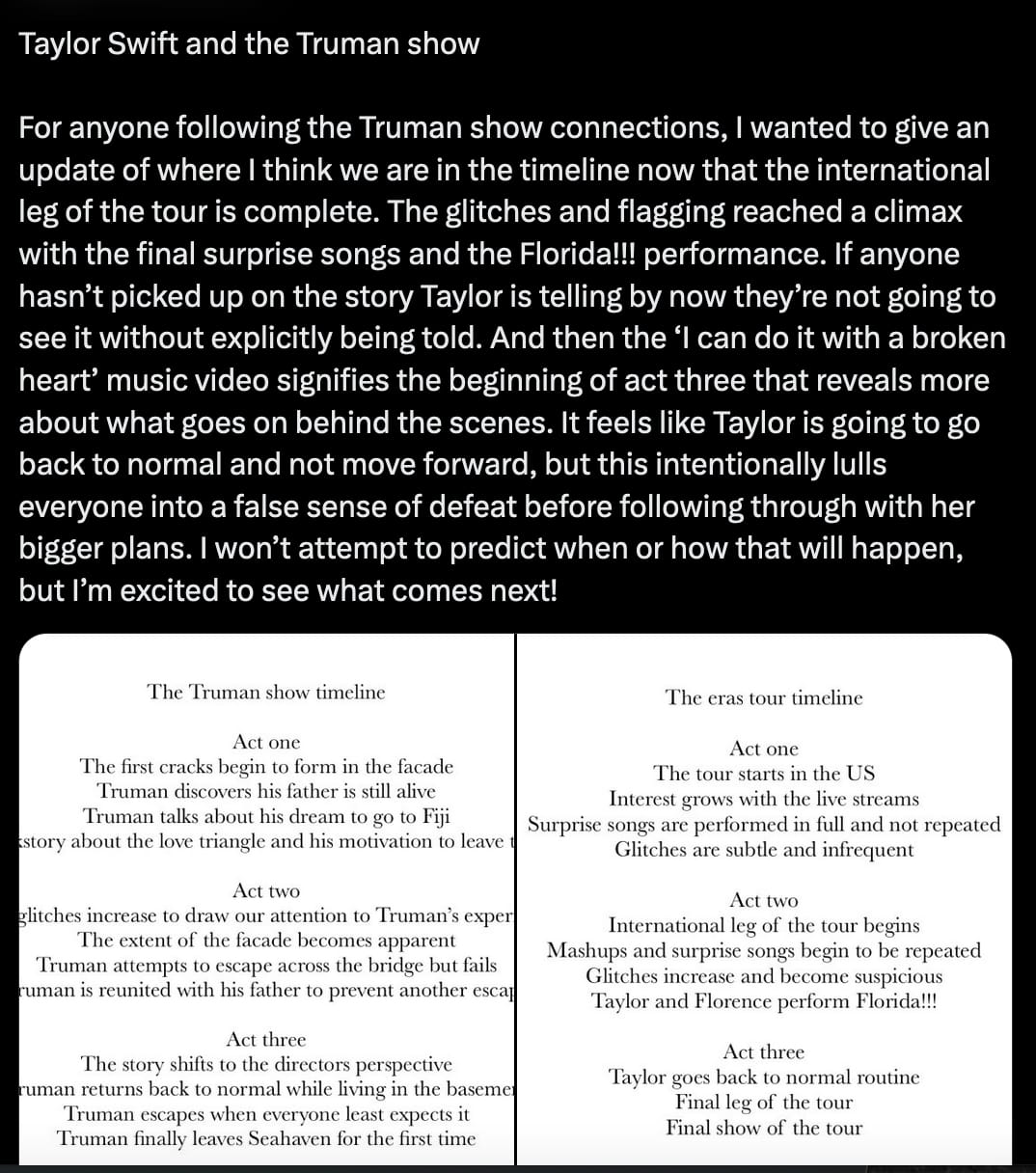
Themes of Public Persona and Personal Authenticity
The song also ties into other themes explored in Swift's work, such as the struggle between public persona and personal authenticity. References to the "forget him" pills from the Fortnight video deepen this narrative of enforced forgetfulness and control, paralleling Truman's manipulation. Lines like "This home is just a town you're just a guest in" from "Lavender Haze" further emphasize the theme of impermanence and the feeling of being a temporary fixture in a world not of her own making
Nods to Dusty Springfield
Swift's 30+ nods to Dusty Springfield in her career from songs to photo shoots are important. Dusty who faced similar struggles in the '70s, add another layer to the narrative. Dusty's attempts to come out damaged her career, and Swift hints that coming out might have similar repercussions for her. Dusty had an album called reputation and that's what's at stake for Taylor.
Florida as Physical and Psychological Escape
In the climax of "Florida!!!", Swift repeatedly sings, "I need to forget, so take me to Florida," underscoring Florida as both a physical and psychological escape. The juxtaposition of beauty and destruction in the song reflects a resigned acceptance of superficiality over genuine fulfillment.
Florida as a Metaphor for Escape
Ultimately, "Florida!!!" portrays the state as more than just a location—it's a metaphor for a place of temporary escape from the overwhelming burdens of fame, history, and identity. The repeated plea to be taken to Florida captures a desire to dissolve into anonymity, where one can momentarily forget the pressures of life. The song ends with a mix of defiance and resignation, encapsulating the complex relationship between the persona and the escape that Florida represents.
Swift's Mastery of Thematic Layering
Swift masterfully layers these themes, inviting listeners to explore the deeper connections between her life, her music, and these iconic films. Following the themes introduced in "Florida!!!," Swift’s subsequent work begins to explore more nuanced facets of identity and reality, drawing inspiration from films like Fight Club. In this 1999 classic, the protagonist wrestles with a split identity, a metaphorical struggle that Swift subtly incorporates into her exploration of the fractured self.
Duality in "Mirrorball" and Fight Club Parallels
In songs like "Mirrorball" from her folklore album, Swift channels the duality of Fight Club’s protagonist, reflecting on the conflicting personas she projects to the world. The lyrics, “I’m still on that trapeze, I’m still trying everything to keep you looking at me,” echo the tension between the performative self and the authentic self—a theme that resonates with the movie’s depiction of societal expectations versus personal freedom and her own inability to talk about her Alphabet Mafia Membership, because of the kids. The twist is.. she can now afford to drive off this cliff and has any checked on Tree since this went down?
Themes of Fame and Illusion in "gold rush"
This exploration of dreams and reality is further echoed in the lyrics of "gold rush" from evermore, where Swift reflects on the fleeting nature of fame and the illusions it creates and Karlie as well of course. The song’s wistful tone, combined with its cinematic imagery, underscores the ongoing tension between Swift’s public persona and her private self—a theme that has been central to her work since the early teardrops on her guitar and continues to evolve in new and unexpected ways. Even pretty baby from Anti Hero is from 30 Rock and Liz’s exchange with the character of that name.
Literary Allusions and Fragmented Identity
In addition to her cinematic references, Swift’s music increasingly draws on literary allusions, particularly from classical mythology and modernist poetry. Her references are akin T.S. Eliot in "The Wasteland" align with her exploration of fragmented identity and the search for meaning in a chaotic world. The fragmented narrative style of "The Wasteland" mirrors the disjointed nature of Swift’s experiences in the public eye, where different versions of herself are constantly constructed and deconstructed by both herself and the media.
Greek Tragedy in "The Last Great American Dynasty"
In her song "The Last Great American Dynasty," Swift uses a narrative structure similar to Greek tragedy, where she recounts the story of Rebekah Harkness—a woman who defied societal expectations and paid the price for it. The song’s narrative arc parallels the myth of Cassandra, a figure from Greek mythology who was cursed to see the future but never be believed. Just as Cassandra’s truth was dismissed, Swift hints at the ways her own voice has been marginalized or misinterpreted, even as she strives to reclaim her narrative through her music. She evokes this friend of Dali who engaged in the performance art much like
Myth and Reality in "Epiphany"
The Greek mythological references continue in songs like "Epiphany," where Swift invokes the image of warriors on a battlefield, drawing a parallel between the ancient heroes and modern-day struggles. This connection between myth and reality underscores the timeless nature of the themes Swift explores—identity, sacrifice, and the quest for self-knowledge.
At first glance, the title and lyrics of the song might appear disconnected from any clear narrative or significance. However, a closer examination reveals a complex layering of themes and references that link back to a familiar cinematic piece in addition to the Truman show: Thelma & Louise. The iconic film, directed by Ridley Scott, tells the story of two women who, after a series of traumatic events, embark on a journey of liberation that ultimately leads them to drive off a cliff in a dramatic act of defiance.
In "Florida!!!"
Tay draws a parallel between her own life under the relentless scrutiny of public and media gaze and Thelma and Louise’s rebellious flight from societal constraints. From a young age, Swift's personal and professional experiences have been broadcast worldwide, shaping her image into a carefully curated product. The song lyrically intersects with the profound moment in Thelma & Louise where the duo, played by Geena Davis and Susan Sarandon, decide to take control of their fate, mirroring Swift's acknowledgment of her performative existence during her bow at the Eras Tour.
The opening lines of "Florida!!!" resonate with themes of forbidden love and societal backlash, reminiscent of the film's plot where Thelma and Louise form a deep bond through their shared experiences of trauma and resistance, only to be hunted down by authorities. Swift uses the metaphor of "going to Florida" to signify a retreat into a persona that erases her authentic self, much like Thelma and Louise’s realization that their only escape from oppression is to drive into the unknown. The state of Florida becomes a symbol for oblivion, a place to forget the pressures and the eyes watching her every move.
Copyright 2024 Brandon Page All Rights Reserved - if you quote me please mention this website

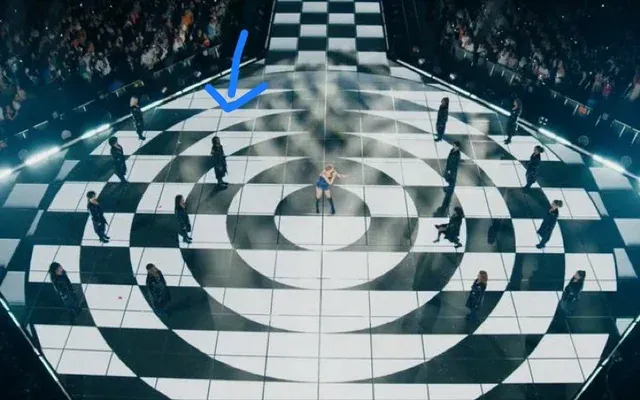
Comments ()